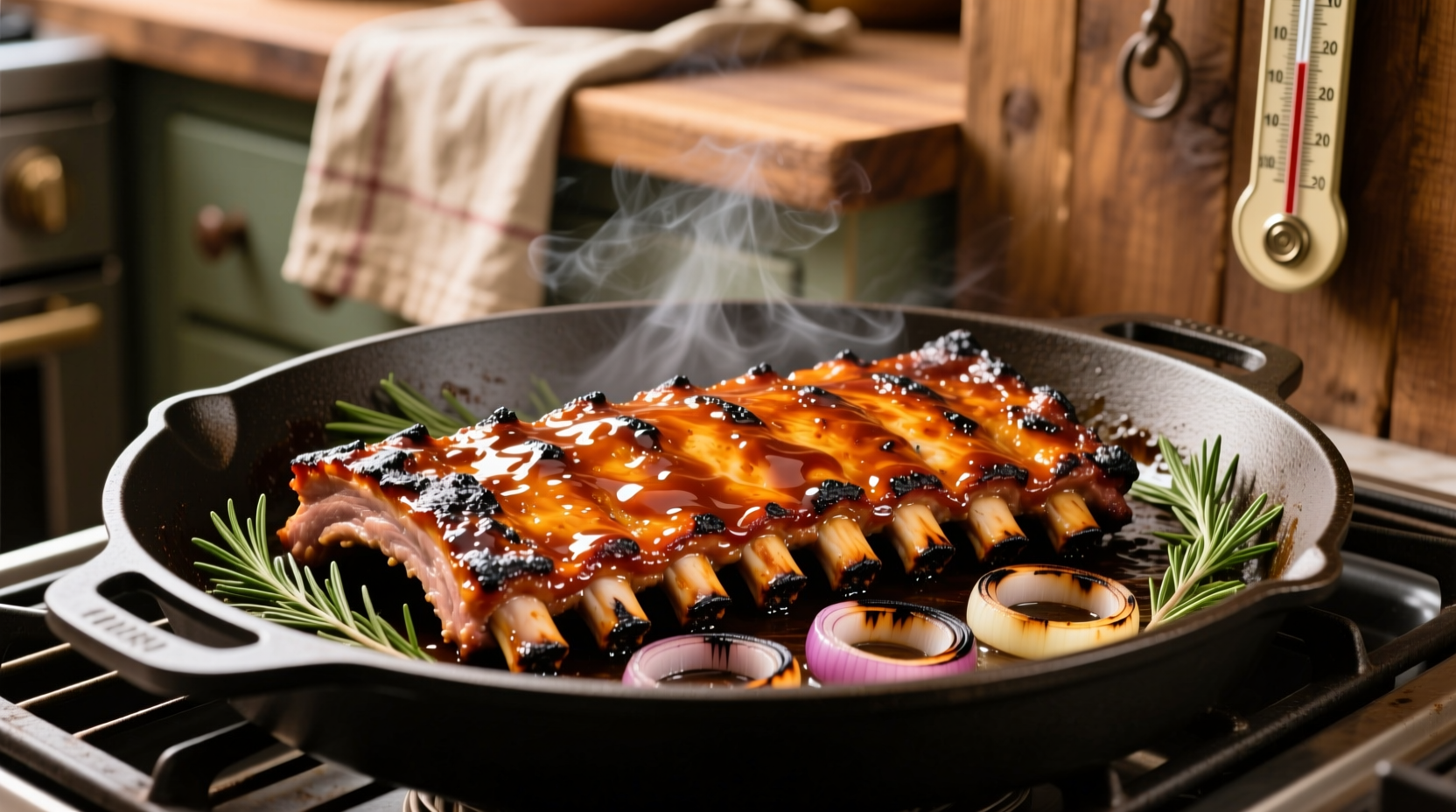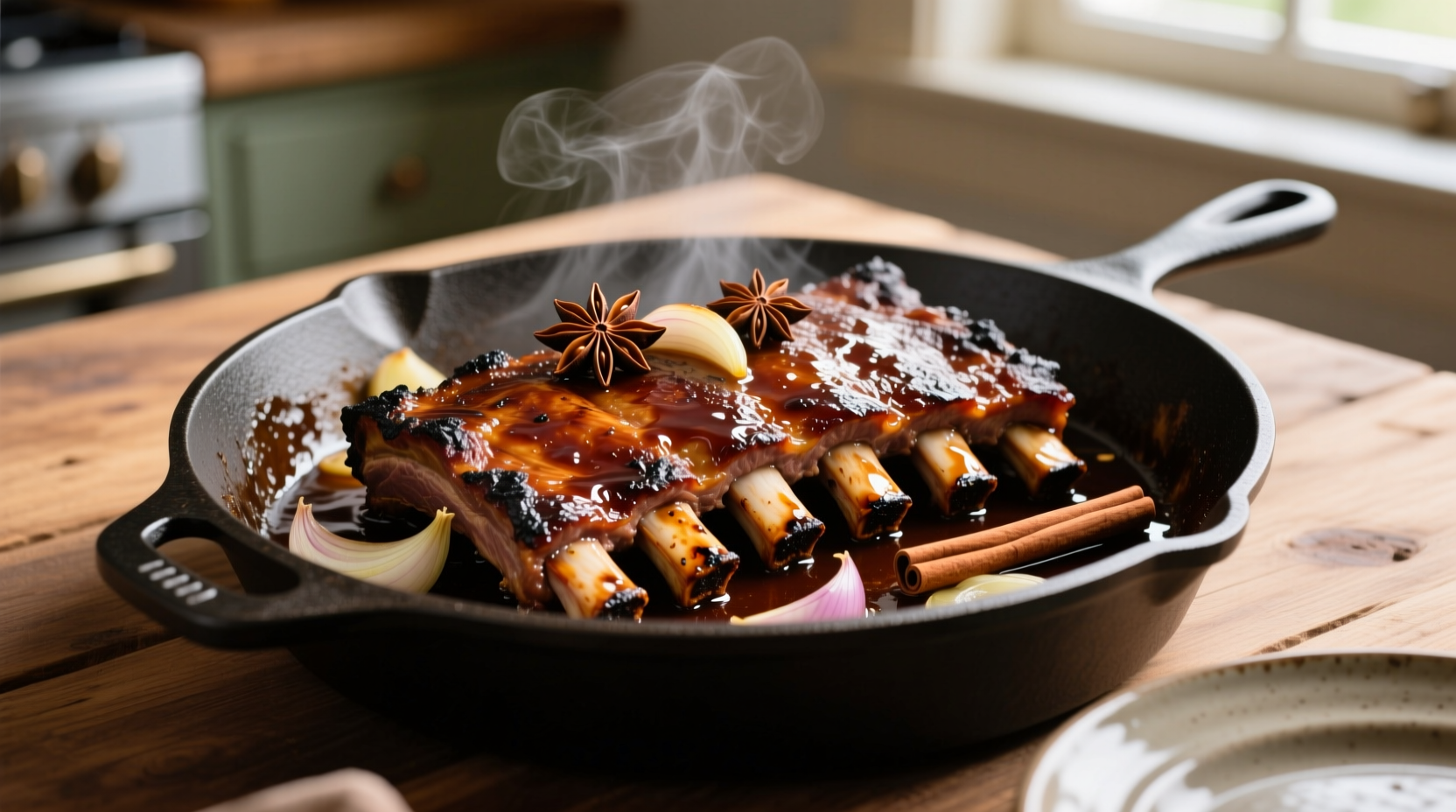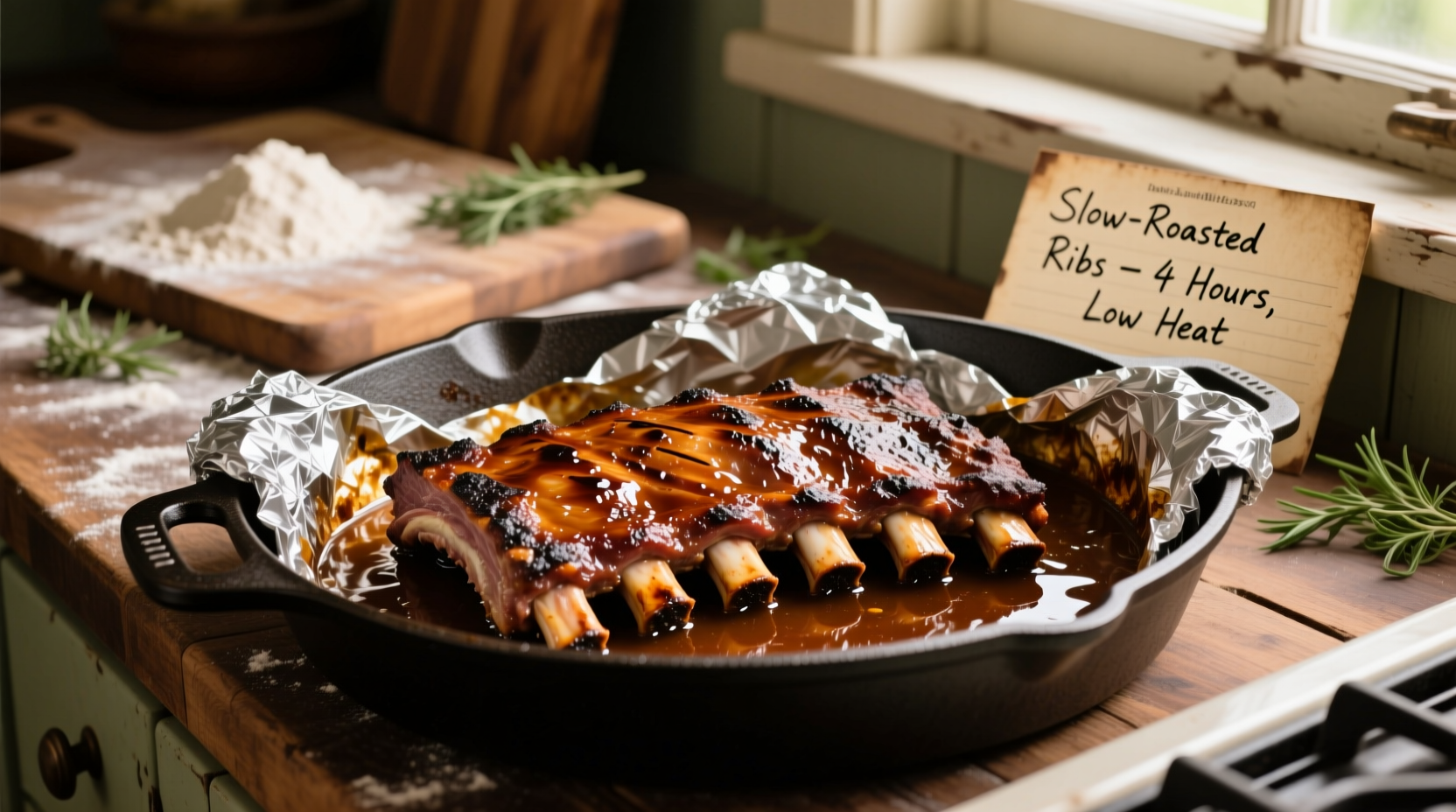Why Oven Slow Cooking Beats Other Methods
Many home cooks struggle with tough, dry ribs when rushing the process. High-heat grilling often chars the exterior before the connective tissue softens, while smokers demand constant monitoring. The oven's controlled environment solves both problems—it maintains precise low temperatures for even collagen breakdown, eliminating guesswork. Unlike slow cookers that submerge ribs in liquid (creating boiled texture), oven roasting concentrates flavors while retaining natural juices.
| Cooking Method | Time Required | Texture Result | Key Limitation |
|---|---|---|---|
| Oven slow roast | 4-6 hours | Fall-off-the-bone tender | No smoke flavor infusion |
| Traditional smoker | 5-8 hours | Smoky bark exterior | Weather-dependent; constant fuel monitoring |
| Slow cooker | 3-4 hours | Overly soft, boiled texture | Liquid submersion dilutes natural flavors |
When to Choose Oven Method (and When to Avoid)
Use this method when: You need consistent results in any weather, lack outdoor cooking space, or want hands-off cooking while preparing sides. Ideal for weeknight dinners or last-minute gatherings since it requires minimal active time.
Avoid this method when: Authentic smoke flavor is essential for your recipe (consider adding liquid smoke to rub), or you're cooking beef short ribs—which require higher collagen-melting temperatures (285°F+) than pork spare ribs. Never skip the foil covering phase; uncovered ribs will dry out before tenderizing.
Step-by-Step: Foolproof Oven Ribs

- Prep ribs: Remove membrane from bone side using a butter knife. Pat dry with paper towels (critical for rub adhesion).
- Mix dry rub: Combine ¼ cup brown sugar, 2 tbsp paprika, 1 tbsp garlic powder, 1 tbsp onion powder, 1 tsp salt, and ½ tsp black pepper (per The Spruce Eats).
- Rub ribs: Massage mixture evenly over all surfaces. Refrigerate uncovered 1 hour for flavor development.
- Preheat oven to 225°F (107°C). Line roasting pan with foil, placing ribs bone-side down on a rack.
- Cover tightly with double-layer foil. Bake 4-6 hours until collagen dissolves (ribs bend easily at 90° when lifted).
- Finish with sauce: Uncover, brush generously with barbecue sauce, and bake uncovered 15-20 minutes at 275°F (135°C) per Food Network.
Safety & Doneness: Beyond "Fall-Off-The-Bone"
"Fall-off-the-bone" is subjective and risks overcooking. The USDA-mandated safe minimum internal temperature for pork ribs is 145°F (63°C) with a 3-minute rest. Use an instant-read thermometer in the thickest section between bones:
| Internal Temp | Texture | Safety Status |
|---|---|---|
| 145°F (63°C) | Firm but tender; slight chew | USDA safe minimum |
| 160-170°F (71-77°C) | "Fall-off-the-bone" tender | Safe; optimal for slow cooking |
| <145°F (63°C) | Chewy; undercooked | Unsafe per USDA guidelines |

3 Costly Mistakes Home Cooks Make
- Mistake 1: Skipping the membrane removal—Creates a barrier preventing rub penetration and causes uneven cooking. Use a paper towel for better grip when peeling.
- Mistake 2: Adding sauce too early—Sugar in barbecue sauce burns at low temps. As Serious Eats confirms, only apply sauce in the final 15-20 minutes.
- Mistake 3: Guessing doneness—Relying on time alone ignores oven variances. Always use a thermometer; ribs cooked at 225°F may take 5 hours in one oven but 6+ in another.
Everything You Need to Know
No. Temperatures above 275°F (Serious Eats) cause rapid moisture loss before collagen breaks down. Stick to 225-275°F for tender results—you’ll waste less meat by waiting.
Cool ribs within 2 hours of cooking. Store in airtight containers for up to 4 days (USDA). Reheat to 165°F internally—microwaving dries them out; use a covered pan with 2 tbsp broth at 250°F for 20 minutes.
Two likely causes: 1) Oven temperature was inaccurate (calibrate with a standalone thermometer), or 2) You skipped foil covering. Steam trapped under foil is essential for tenderizing—uncovered ribs dry out before collagen dissolves.
Adjust temperatures: Beef requires 285-300°F to melt dense collagen. Cook covered at 275°F for 3 hours, then uncover and raise to 300°F for 1-2 hours until fork-tender. Pork spare ribs need lower temps due to thinner connective tissue.











 浙公网安备
33010002000092号
浙公网安备
33010002000092号 浙B2-20120091-4
浙B2-20120091-4